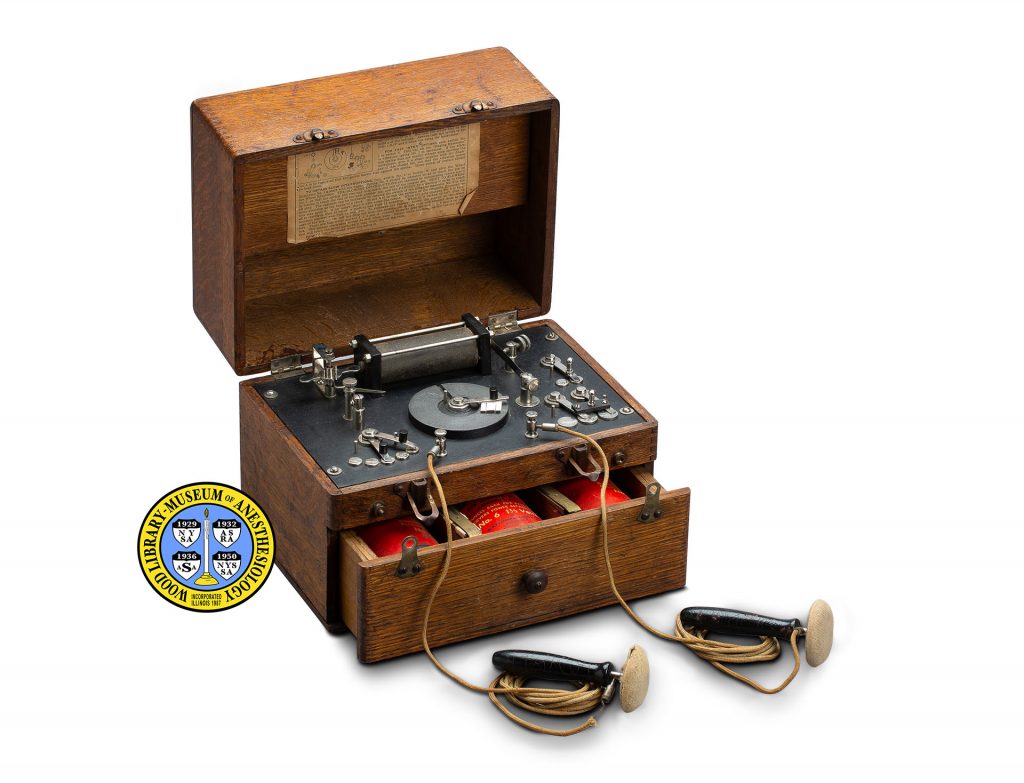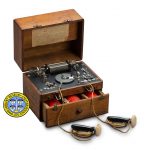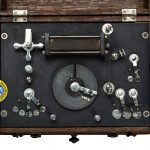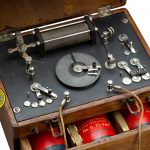Hutchinson Singing Rheotome
Electrical stimulation therapy applies electric current to treat various medical conditions. In the late 19th and early 20th centuries, numerous electrotherapy devices were marketed that falsely claimed a wide range of cures and other health benefits. The American Electro-Therapeutic Association (AEA) was founded in 1891, in part to distinguish quackery from the medical and surgical uses of electricity. One of the AEA's founding members was William F. Hutchinson, M.D. (1838-1893), of Providence, Rhode Island.
In 1892, Dr. Hutchinson introduced his singing rheotome. A rheotome is an instrument that interrupts an electric current. His instrument used a ribbon of metal that was made to vibrate at high speed. He reported that the rheotome could be tuned to produce sounds in the keys of A, at the lowest rate of vibration, through G, at the highest. He stated that three minutes of treatment with the rheotome tuned to the key of C major (a rate of 450 vibrations per second) resulted in a brief period of local anesthesia, and that fifteen minutes of this treatment produced local anesthesia that could last for days. These claims were refuted at the AEA's 1901 annual meeting, but singing rheotomes continued to be marketed through the end of that decade.
Catalog Record: Hutchinson Singing Rheotome Contact [email protected] for catalog record.





